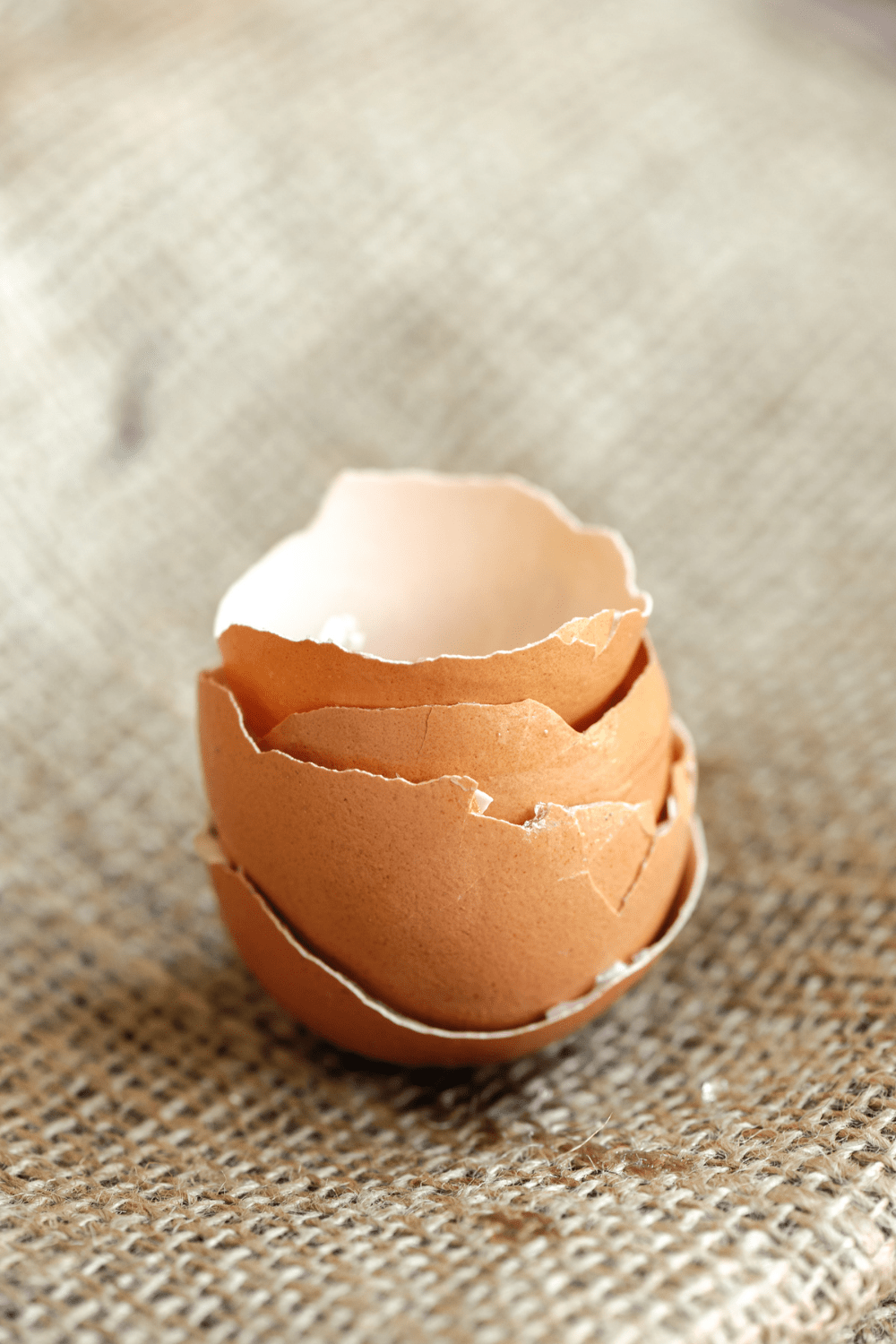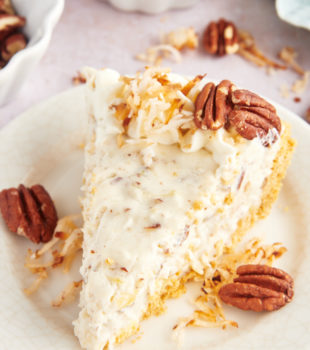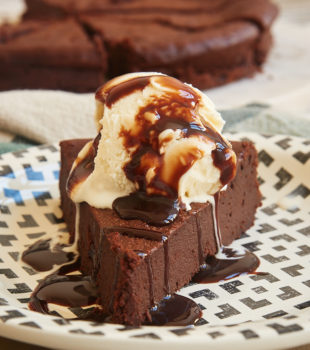If you need a quick substitute for an egg or are baking egg-free, these egg substitutes for baking will help you make the most of your baking!

Egg Substitutes for Baking
I am very much a traditional baker, so using egg substitutes is not something I do often. Even though I don’t aim to bake egg-free, there are times when I need an easy substitute. If you’re looking to bake egg-free or just find yourself short an egg or two for your baking project, there are several options for you to consider.
What Eggs Do in Baking
Before we jump into possible substitutions, let’s talk about what eggs do in baking so that it’s easier to understand how to choose a substitute and what to expect. There are four main things that eggs provide in baking: binding, leavening, moisture, and flavor.
Binding refers to providing structure and, in its simplest definition, just means holding things together. Leavening is about creating air and giving rise to whatever you’re baking. Moisture and flavor are self-explanatory, but they are certainly not to be ignored.
What to Expect When Using an Egg Substitute
I also want to stress that substitutes can replace some of what an egg does, but not everything. Keep in mind that you should expect at least some differences in texture, appearance, and flavor. And not every substitution works for every recipe. If you’re looking to bake egg-free, then it may take some experimenting to get it just right for your favorite baked goods.
Remember that the more eggs you’re substituting, the more likely you are to run into trouble. As a general rule, you’ll have more success substituting 1 or 2 eggs versus an egg-heavy recipe.
Most Common Egg Substitutions for Baking
With so many options available, let’s start with the most common and successful substitutions. Then we’ll get into everything else.

Flax Seeds and Chia Seeds
Flax seeds and chia seeds have become common egg substitutions. It’s easy to make this substitution with just ground seeds and water. For texture purposes, the seeds (especially the flax seeds) need to be ground, so either grind the whole seeds in something like a coffee grinder or buy them pre-ground.
When to use flax eggs and chia eggs: Use flax eggs or chia eggs when the eggs in the recipe are for moisture and binding, not leavening. You’ll likely find this to be a reasonable substitute in quick breads, muffins, brownies, cookies, and some cakes.
Potential drawbacks: Flax eggs can lend a nutty flavor to baked goods. Chia seeds have a somewhat milder flavor. Baked goods made with flax eggs or chia eggs can tend to be heavy and dense.
How to make an egg substitute with flax seeds or chia seeds: For each egg to be substituted, combine 1 tablespoon ground flax seeds of ground chia seeds with 3 tablespoons warm water. Mix and let stand for 10-15 minutes to allow the seeds to absorb the water. The mixture should then be a gelatinous mixture with a similar texture to beaten eggs.
Aquafaba
Aquafaba is just a fancy name for bean water. And that’s literally what it is. The thick water from a can of chickpeas (or even another type of bean) or from cooking them can be used as an egg substitute.
When to use aquafaba: Aquafaba can be used as an egg substitute in baked goods with lighter, fluffier textures. When simply used for binding, it will need to be lightly whipped until foamy. In fact, it can be a good choice in recipes that just need egg whites. They can even be whipped into peaks for meringues. Consider this substitute for cakes, meringues, and even marshmallows.
Potential drawbacks: Unless you eat a lot of chickpeas, this may not be something you’re likely to want to keep on-hand. You’ll also need to consider if there’s salt added. There’s also the potential for some flavor alterations. The consistency also needs to be similar to egg whites, so a thinner liquid will need to be reduced over low heat on the stovetop until thickened.
How to make an egg substitute with aquafaba: For each egg to be substituted, use 3 tablespoons aquafaba. If you’re substituting egg whites, use 2 tablespoons. Whip as described above.

Fruit and Vegetable Purees
You’re likely familiar with mashed bananas or applesauce as egg substitutes. But you can also use other fruit and vegetable purees like pumpkin, avocado, sweet potatoes, squash, and more.
When to use fruit and vegetable purees: These are best suited for baked goods that need eggs primarily for moisture. Consider them for cookies, brownies, and quick breads. Make sure they are well blended and smooth. It’s also worth noting that you can potentially add a bit of baking powder also if you need the leavening.
Potential drawbacks: The main concern here is flavor. You’ll get a little or maybe even a lot of flavor from these substitutes. Just consider if you’re comfortable with your baked goods having some degree of that flavor added. If you’re using applesauce, go with unsweetened or you’ll likely need to adjust the sugar in the recipe as well.
How to make an egg substitute with fruit and vegetable purees: For each egg to be substituted, use 1/4 cup of puree.
Silken Tofu
Silken tofu has a high water content, which makes it softer and a candidate for egg substitution. It will need to be mashed or whipped until it’s smooth. It’s relatively flavorless, so it shouldn’t alter the taste much for recipes that aren’t dependent on eggs for flavor.
When to use silken tofu: The thickness of silken tofu means it is likely to work best with thicker baked goods, like brownies, quick breads, and some cakes.
Potential drawbacks: You won’t get any leavening properties here, so there is potential for dense and heavy results. You can experiment with adding a leavener like baking soda to help.
How to make an egg substitute with silken tofu: For each egg to be substituted, use 1/4 cup silken tofu that has been mashed or whipped until smooth.
Commercial Egg Replacers
There are many brands of commercial egg replacer available. Most of these are made from starches like tapioca starch, potato starch, and corn starch, along with some kind of leavening agent. However, some products will contain different ingredients. Check the packaging for specific ingredients.
When to use commercial egg replacers: Because of their bulk size, these egg replacers are more likely a candidate for someone who doesn’t want to bake with eggs versus someone just looking to substitute occasionally. Some may work better than others in different kinds of baked goods, but they usually provide some leavening that you don’t get from most egg substitutes.
Potential drawbacks: With variance among brands of egg replacers, you’re likely in for some experimentation to find what works for you and your favorite baked goods.
How to make an egg substitute with commercial egg replacers: Follow the directions on the package for substitution.

Other Egg Substitutes
Once you start digging into potential egg substitutes, you’ll quickly find that there are so very many possibilities. For my purposes, I’m most likely to use one of the above substitutions. But I want to mention a few more potential substitutions to consider.
(Substitutions are for each egg in the recipe.)
- 3 tablespoons creamy nut butter Keep in mind the flavor addition before using. I usually have something like this on-hand, so it’s definitely a consideration.
- 1/4 cup buttermilk or plain yogurt This is more likely to work well in denser baked goods where there are other leavening agents already in the recipe. This is obviously not an option if you’re vegan, but dairy-free yogurt may work in some cases.
- 1/4 cup sweetened condensed milk Keep in mind the “sweetened” part of this. You’ll need to adjust the sugar in the recipe if you don’t want the added sweetness. Again, this is not a vegan option.
- 1 teaspoon baking soda + 1 tablespoon white vinegar or apple cider vinegar This one is a little more sensitive to substitution but potentially would work for lighter, airier baked goods. Use with caution if the recipe already has a good bit of leavening.
- 1/4 cup carbonated water This is something many of us are likely to have on-hand in an egg substitution emergency. Sure, you may have nut butters or a fruit you can puree, but this could work without adding any unwanted flavor.
- 2 tablespoons water + 2 teaspoons baking powder + 1 teaspoon vegetable oil Again, these are things you’re likely to have on-hand if you bake and cook with regularity. This substitution could work when you really need the leavening power of eggs. Use with caution if the recipe already has a good bit of leavening.
- 2 tablespoons arrowroot powder, corn starch, potato starch, or tapioca starch + 3 tablespoons water Similar to some commercial egg replacers, these starches aid in binding and moisture. Unlike many of those, though, there’s no leavening added.
- 1 tablespoon unflavored gelatin in 1 tablespoon cold water, then add 2 tablespoons boiling water and mix until frothy If you’re a vegan baker, you’ll want to skip this one as it’s usually made with animal products.
- 1 tablespoon agar powder + 3 tablespoons warm water This behaves similarly to gelatin but without the animal products. Whip the mixture, refrigerate, and whip again before using. Alternately, 1 tablespoon of agar mixed with 1 tablespoon of water can substitute for an egg white.
Egg Substitutions for Baked Goods
Whatever your reason for needing an egg substitute, I hope you find this helpful. I know there are a lot of options to consider, so let’s look at a quick overview for deciding what substitute to use for different types of baked goods. As always, your results will likely vary depending on the recipe.
- Cookies: flax or chia seeds, aquafaba, commercial egg replacers, fruit and vegetable purees
- Cakes: flax or chia seeds, fruit and vegetable purees, aquafaba, commercial egg replacers
- Brownies: fruit and vegetable purees, silken tofu, commercial replacers
- Quick breads: fruit and vegetable purees, silken tofu, flax or chia seeds, commercial egg replacers
Happy baking!








2 Comments on “Egg Substitutes in Baking”
You are a gift from God’s kitchen.
Thank you, Tess! 🙂